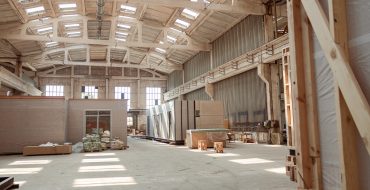
Adoption of Prefabrication in Construction
Industry leaders are speaking out on the need for modernization in construction. “There is an urgent need for the construction industries to integrate technologies into their models. Only an effective and immediate digital transition will strengthen a weakened sector and support a green recovery that is more necessary than ever,” said Matthieu Walckenaer, a developer of communication software used in construction. The hope is that adoption of modern construction practices, like prefabrication, will bring multiple benefits to workers and customers alike.
Prefabrication in construction is the act of elements, parts, and/or entire projects being built in a factory, then transported to the build site for quick installation. Prefabrication offers numerous advantages to construction companies: cost saving, speedier project timelines, efficiency, and a reduction in cascading errors.
According to Research and Market’s new report, the global prefabricated building market is expected to grow 6% by 2026. While this doesn’t seem like a large percentage of growth, there have been some recent adoptions of the method by big corporations.
A new concourse at Dallas-Fort Worth International Airport has been constructed using a prefabricated method. This is the first time a United States airport adopted prefabrication for its construction. The modules were built at a designated prefabrication site a quarter-mile away from the build site. Each module weighed up to 450 tons and were transported by self-propelled modular transporters. Once the prefabricated pieces were on site, the concourse was completed in nine days.
Prefabrication construction start-ups, Abodu and Mighty Building, have raised $20 and $40 million respectively, for their visions. Abodu, a California-based company, focuses on building prefabricated Accessory Dwelling Units. ADUs are smaller residential homes located on the same lot as traditional single-family homes. Abodu boasts that their prefabricated ADUs are able to be installed in 10% of the time it would take to build an ADU on-site.
Oakland-based Mighty Buildings combines prefabrication and 3D printing in their construction. Mighty Buildings claim to be able to 3D print structures “two times as quickly with 95 percent less labor hours and 10 times less waste” than conventional construction. They say their business can 3D print a 350-square-foot studio apartment in just 24 hours.
While adoption of prefabrication is slow moving, companies like Abodu and Mighty Buildings are eager to show how prefab buildings can be efficient, high quality and accessible for housing construction and other larger projects.
https://www.archdaily.com/968367/prefabrication-could-make-housing-construction-more-affordable
https://techcrunch.com/2021/07/15/abodu-raises-20m-to-build-prefabricated-backyard-homes/